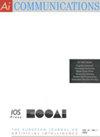Special issue on historical and future perspectives of AI
IF 1.4
4区 计算机科学
Q4 COMPUTER SCIENCE, ARTIFICIAL INTELLIGENCE
引用次数: 0
Abstract
In its role as the European Journal on Artificial Intelligence, AI Communications strives to showcase high quality research developed in Europe. Under this premise, we invited contributions reflecting historical and future perspectives of AI. This issue is the result of such invitations. The papers appearing in this issue are as heterogeneous as the whole Artificial Intelligence field. The first paper deals with the very current issue of accountability in AI. With a view towards the future of AI, the paper provides an accountability ecosystem, taking into account lessons learned from recent industrial AI systems and their drawbacks. The second paper analyses the current trends in the area of Neuro-Symbolic AI. Although the general area of Neuro-Symbolic integration has been around for over two decades, it has only very recently become a main-stream topic, as attested by the number of submissions in top AI-related conferences. The third paper makes a connection between recent formalisations of analogical reasoning, on the one hand, and the historical treatment of numerical proportions, on the other hand. We are very aware that there are many historical and future perspectives of AI that are not covered in this issue. Our hope is that these papers will spark a larger conversation.关于人工智能的历史和未来观点的特刊
作为《欧洲人工智能杂志》,《人工智能通讯》致力于展示欧洲开发的高质量研究。在这个前提下,我们邀请了反映人工智能历史和未来观点的文章。这个问题就是这种邀请的结果。本期发表的论文就像整个人工智能领域一样五花八门。第一篇论文讨论了当前人工智能中的问责制问题。鉴于人工智能的未来,本文提供了一个问责制生态系统,考虑到从最近的工业人工智能系统及其缺点中吸取的教训。第二篇论文分析了当前神经符号人工智能领域的发展趋势。尽管神经-符号集成的一般领域已经存在了二十多年,但它直到最近才成为一个主流话题,这一点可以从顶级人工智能相关会议上提交的文件数量中得到证明。第三篇论文一方面在最近的类比推理形式化,另一方面在数值比例的历史处理之间建立了联系。我们非常清楚,有许多AI的历史和未来视角没有在这个问题中涵盖。我们希望这些论文能引发更广泛的讨论。
本文章由计算机程序翻译,如有差异,请以英文原文为准。
求助全文
约1分钟内获得全文
求助全文
来源期刊

AI Communications
工程技术-计算机:人工智能
CiteScore
2.30
自引率
12.50%
发文量
34
审稿时长
4.5 months
期刊介绍:
AI Communications is a journal on artificial intelligence (AI) which has a close relationship to EurAI (European Association for Artificial Intelligence, formerly ECCAI). It covers the whole AI community: Scientific institutions as well as commercial and industrial companies.
AI Communications aims to enhance contacts and information exchange between AI researchers and developers, and to provide supranational information to those concerned with AI and advanced information processing. AI Communications publishes refereed articles concerning scientific and technical AI procedures, provided they are of sufficient interest to a large readership of both scientific and practical background. In addition it contains high-level background material, both at the technical level as well as the level of opinions, policies and news.
 求助内容:
求助内容: 应助结果提醒方式:
应助结果提醒方式:


